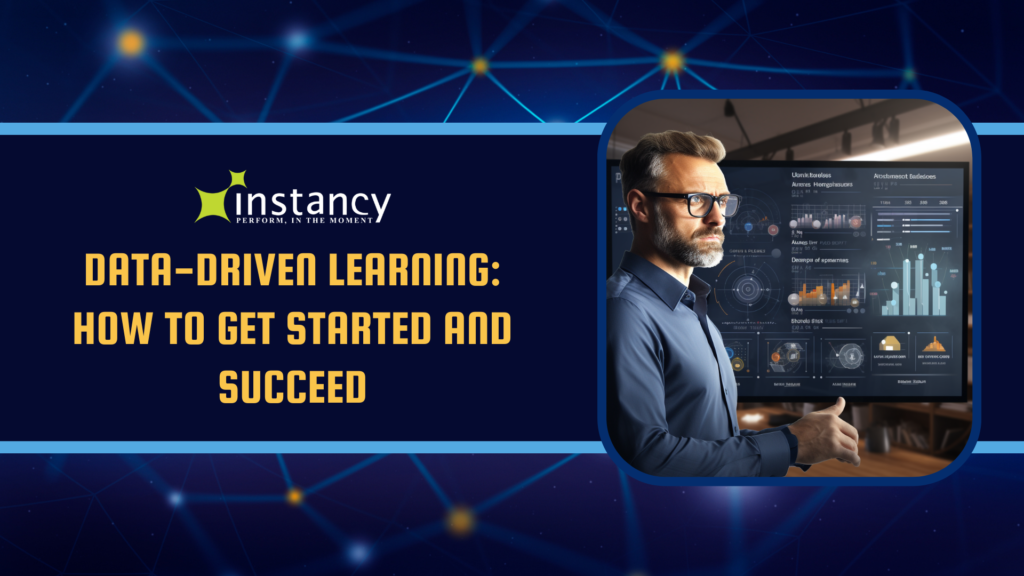Introduction
Learning analytics (LA) is the collection, measurement, analysis, and reporting of data about learners and their interactions with learning environments and technologies. L&D teams can use LA to inform decision-making, demonstrate value to the company, and concentrate resources and budgets on what matters most.
As L&D strategies become more digital and data-driven, L&D teams must have the resources and expertise to implement and use LA effectively. However, many organizations face challenges in gathering and using data to improve their learning programs.
This article will discuss how to get started with data-driven learning, including:
- Gathering learning data and getting to know the data
- Operationalizing data-driven decisions
- Exploring and using learning data to improve programs
- Examining the technologies that will support data-driven L&D programs efficiently
Gathering Learning Data
The first step in implementing data-driven learning is to gather data about your learners and their interactions with your learning programs. This data can come from a variety of sources, such as:
- Learning management systems (LMSs)
- Course authoring tools
- Assessment tools
- Surveys
- Interviews
Once you have gathered your data, it is important to clean and organize it to be easily analyzed. This may involve removing duplicate data, correcting errors, and converting data into a consistent format.
Getting to Know the Data
Once your data is clean and organized, you must take time to get to know it. This involves exploring the data to identify trends and patterns. You can use various data visualization tools to help you understand your data.
For example, you might use a bar chart to compare the average course completion rates. Or you might use a line chart to track the number of learners who have completed a particular learning program over time.
Operationalizing Data-Driven Decisions
Once you understand your data well, you can start to use it to make data-driven decisions about your learning programs. For example, you might use data to identify the most or least popular courses. You can also use data to identify struggling learners who need additional support.
To operationalize data-driven decisions, you need to create processes and systems for collecting, analyzing, and reporting on data. You must also ensure your team has the skills and knowledge to use data effectively.
Exploring and Using Learning Data to Improve Programs
You can use learning data to improve your learning programs in various ways. For example, you can use data to:
- Identify which courses are most effective at helping learners achieve their learning objectives
- Determine which delivery methods are most effective for different learners
- Develop targeted interventions for learners who are struggling
- Personalize learning experiences for individual learners
Examining the Technologies that Will Support Data-Driven L&D Programs Efficiently
There are several technologies that can help you support data-driven L&D programs efficiently. These technologies can help you to:
- Collect and store learning data
- Clean and organize learning data
- Analyze learning data
- Visualize learning data
- Report on learning data
When choosing technologies to support data-driven L&D programs, it is important to consider your organization’s specific needs. You should also consider the cost and complexity of the different technologies available.
Conclusion
Data-driven learning can help L&D teams improve their learning programs and demonstrate their value to the company. However, having the resources and expertise to implement and use data-driven learning effectively is important.
By following the steps outlined in this article, you can start with data-driven learning and use data to improve your learning programs.
Next Steps
To build a data-driven strategy for learning, please get in touch with Instancy. We specialize in helping L&D teams to use data to improve their learning programs and demonstrate their value to the company.
We have a deep understanding of learning management systems (LMSs), learning record stores (xAPI), and data across all content types. We also have experience integrating with business applications to build a holistic view of learning and business impact.
We work with L&D teams to customize the learning analytics visualizations, data storytelling and reports they need to make informed decisions about their learning programs.
Here are some specific benefits of working with Instancy to build a data-driven strategy for learning:
- Increased learner engagement: We can help you to identify which courses and learning activities are most engaging for your learners.
- Improved learning outcomes: We can help you to identify which learning programs are most effective at helping learners achieve their learning objectives.
- Reduced costs: We can help you to identify and eliminate inefficiencies in your learning programs.
- Increased ROI: We can help you to demonstrate the value of your learning programs to the company.
If you are ready to get started with data-driven learning, please get in touch with Instancy today for a free consultation.
Additional details:
- Instancy is a team of experienced learning analytics experts.
- We have a proven track record of helping organizations to implement and use data-driven learning effectively.
- We offer a variety of services to support data-driven learning, including:
- Learning analytics consulting
- Data visualization and storytelling
- Report development
- Training and support
- We work with a wide range of organizations, including Fortune 500 companies, startups, and educational institutions.
Contact Instancy today to learn more about how we can help you to build a data-driven strategy for learning.



